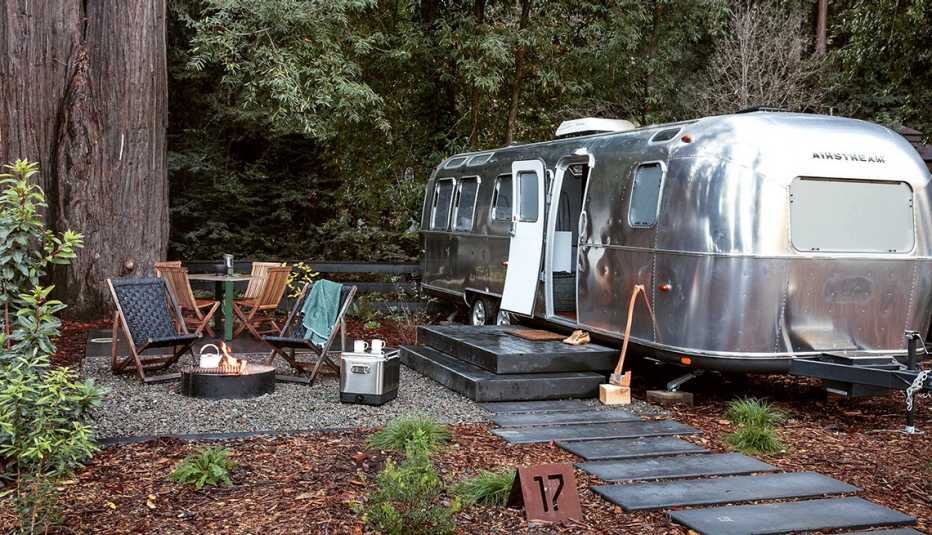Staying Fit
Beaches
This is why you visit, right? For Cancún’s 14 miles of warm-water beach bliss. The Hotel Zone’s north-facing beaches along the top of the “7”-shaped island are protected by a calm bay, while east-facing beaches along the leg are pummeled by the Caribbean. Though lacking the intense turquoise hues, tranquil waters off the northern beaches are ideal for swimming, especially for novices, children and those less steady on their feet. East-facing beaches have no buffer from the wind and can have treacherous currents and crashing waves, but they are unmatched for sunbathing and camera-ready scenic beauty. Take lifeguards’ signals and the color-coded warning flags seriously wherever you go.


AARP Membership— $12 for your first year when you sign up for Automatic Renewal
Get instant access to members-only products and hundreds of discounts, a free second membership, and a subscription to AARP the Magazine.
You don’t have to stay in a big resort or join a beach club to enjoy Cancún’s beaches. By law, they’re all public property, including those claimed by resorts; 11 are designated public access beaches.
Food, drink and water-sports rentals are available at most beaches, though chairs or beach umbrellas may belong to individual resorts. Seven strands are considered Blue Flag beaches, certified for water quality, safety and accessibility; they provide bathrooms, changing rooms, showers, ramps, palapas and playgrounds.
One of these, the never-crowded Playa Delfines, is Cancún’s most beautiful beach and the only one not blocked off by a resort. Another, Playa Las Perlas, became the city’s first fully accessible beach in 2017. It has access ramps, amphibious beach chairs, accessible bathrooms and other helpful features.
Standout Riviera Maya beaches include Puerto Morelos, whose pristine coral reef offers superb snorkeling and diving; Playa Norte, Isla Mujeres’ stunning (but often crowded) swimming beach; and roomy Xpu-Ha, on a wide bay mercifully free of huge resorts. Playa Punta Esmeralda in Playa del Carmen has accessible bathrooms, showers and beach wheelchairs you can use for no charge. Though Tulum’s sublime swath of sand is perpetually packed, Playa Paraíso, between the ruins and the hotel strip, is rarely crowded and rewards a short swim from shore with a view of ancient temples. Sun beds with beach umbrellas are available for rent.
Archaeological sites
All over the Yucatán, thousands of green “hills” are in fact vestiges of the ancient Maya’s advanced civilization, now reclaimed by jungle. And many visitors are surprised to find you can visit excavated sites even in Cancún.
El Rey may be the Hotel Zone’s most tranquil spot, with broken columns and palace stairs-to-nowhere standing in surreal juxtaposition to the Iberostar Cancún’s faux pyramid next door. The tallest pyramid in the area (climbing is prohibited) is hidden in deep jungle at the sparsely visited El Meco, just north of the Centro. Its resemblance to Chichen Itza is striking.
In the Riviera Maya, the beautiful if overly reconstructed walled city of Tulum is famous for its perch above the Caribbean. Hilly, sandy terrain in spots poses challenges for some wheelchair users, but the information center lends out a special wide-tired chair to make it easier to get around. Most of the enormous site of Cobá, in the jungle east of Tulum, slumbers under vegetation, creating a sense of ancient spirits undisturbed. It would daunt visitors with mobility issues if not for the squadron of triciclos (traditional Mayan tricycles), whose drivers will pedal you around for a small fee.
By far the largest and most impressive Mayan archaeological ruins site in the region, Chichen Itza was named one of the New Seven Wonders of the World in 2007. Several buildings have survived on the sacred site, including El Castillo, a 98-foot pyramid of stone. If you’re not fit, you won’t want to climb the ruins. But there’s still plenty to see just strolling around. And the generally flat landscape makes getting around feasible for those in wheelchairs, too. To visit the site, about a two-hour drive from Cancún, arrange a tour through your hotel. Bite the bullet and opt for one that leaves very early in the morning, as you’ll want to get there as close to 9 a.m., when the site opens, as possible. That’s when tourists are few and the weather is still pleasant and not so hot.
Archaeological sites have bathrooms and sometimes a picnic table or food concession near the entrance, but there are no benches or other anachronistic structures. Though wheelchairs might not be able to navigate every corner of these sites, they are mostly walkable even by those with walkers or canes except for some buildings located off the main paths.
Nature sites
The Yucatán harbors more natural marvels than one person could explore in a lifetime, but some simply should not be missed. Topping that list is the UNESCO World Heritage Site, Sian Ka’an Biosphere Reserve, a 1.3 million-acre tract of protected jungle, beaches and cenotes (lagoons and caves where freshwater underground rivers meet the Caribbean Sea) barely changed over the millennia. You can explore some of its beaches on your own, but to find the secret jungle paths that plunge you into the Mayan world, book a tour from Visit Sian Ka’an or Community Tours Sian Ka’an. These groups take special care to enable people with mobility issues to explore the natural treasures here.
Xcaret eco-archaeological park corrals bits of the Yucatán’s best offerings, from snorkeling to wildlife watching (butterflies, jaguars, manatees) to nightly cultural shows. You can get a massage in a cavern lagoon; swim with sharks, dolphins or stingrays; and even walk on the bottom of the sea using an innovative Sea Trek helmet. The park is accessible except for a few steep, rocky passages. The visitor center rents wheelchairs and will help people with disabilities plan their day.
































































